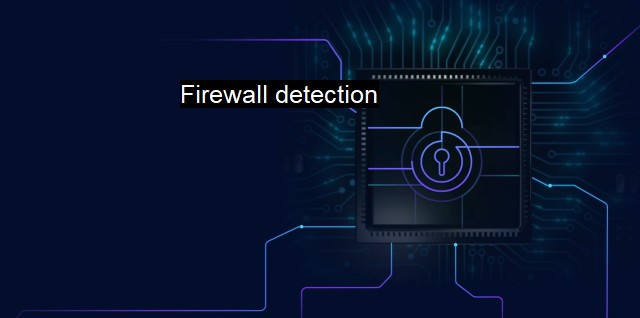What is Firewall detection?
Firewall Detection: Safeguarding Your Network from Online Threats
Firewall detection is an important concept in the field of cybersecurity. Fundamentally, it refers to the ability to identify whether a firewall is present and how it is functioning within a given system. This capability is a critical part of maintaining reliable protection for computer networks and individual computers alike. Together with other aspects of security like anti-virus measures, firewalls create a comprehensive defensive structure.A firewall can be understood as a form of barrier or shield, put in place to restrict the transmission of suspect data or dangerous malware from reaching computers and networks. It scrutinizes the traffic coming in and out of the network, filtering out anything potentially harmful or unauthorized. Thus, a properly functioning and configured firewall is an essential component of cybersecurity.
Firewall detection mechanisms can confirm the existence of these vital controls, assess the efficiency of their function, and determine their configurations through several methods. This includes active detections, which may include tests to verify if the firewall is active on particular devices or within a network, or passive detection, which is a less intrusive method that involves observation and interpretation of network traffic.
The context of Cybersecurity has now expanded beyond personal computers to various connected devices, including tablets, smartphones, and IoT devices which all need firewall protection and hence, the requirement for their detection. These security steps prevent exposure of sensitive data and stop harmful infections from corrupting the security profiles of such devices.
The most extraordinary feature of a well-constructed firewall is its adaptability. The programmers design it to keep pace with the ever-evolving nature of cyber threats and improvements in hacking methods. for it to function at its peak efficacy, there must be proper detection and understanding, all requiring continual monitoring and adjustments.
One would suppose that the broad implementation of firewalls worldwide would mean cyber attacks decrease significantly. initial installation is just the first part of firewall protection. Firewalls need continual management to ensure they are effectively keeping up with the changing, increasingly sophisticated threats online. This management is where robust firewall detection comes into play.
Firewall detection works alongside antivirus tools, forming an essential part of any cybersecurity strategy. While firewall manages the incoming and outgoing traffic and restricts unauthorized access to a network, the antivirus software protects the system from any malicious programs that have managed to enter the system. Thus, implementing both security measures ensures a robust defensive line minimizing the risk of a security breach.
It is important to remember that, like many aspects of security, firewall detection is not impervious. Advanced threats use techniques that are designed to bypass or even render firewalls invisible, leading to a break in the protective barriers. Therefore, as part of an efficient defense strategy, firewall detection requires regular auditing and updating, augmenting its ability to respond to vulnerabilities brought by frequently emerging threats.
To sum up, firewall detection is a vital part of cybersecurity. It involves the identification, configuration, testing, and management of firewall protections, as political and economic factors lead to24 an increasing need for stronger cybersecurity measures. Those who are willing to invest in reliable firewall detection solutions vastly improve the resilience of their systems against unwanted intrusions, safeguarding their networks from the rapid proliferation of cyber threats. Correspondingly, both firewalls and antivirus tools must be handled together, maintaining integral components of a well-rounded, updated, and effective security strategy ensuring the safety of computing and connectivity infrastructures. The consequences of neglecting such crucial defenses can result in catastrophic data loss, theft, and even financial ruin.

Firewall detection FAQs
What is firewall detection?
Firewall detection is the process of identifying and assessing the effectiveness of a firewall in a network. This is done to ensure that the firewall is working correctly and blocking any potential threats that may come into the network.Why is firewall detection important?
Firewall detection is important because it helps to identify any vulnerabilities or weaknesses within a network's firewall. By identifying these weaknesses, cybersecurity professionals can take action to strengthen the firewall and prevent any potential threats from entering the network.What tools are used for firewall detection?
There are several tools that can be used for firewall detection including port scanners, packet sniffers, vulnerability scanners, and intrusion detection systems. These tools are designed to identify any potential security risks in the network's firewall and help to protect against cyber attacks.How often should firewall detection be performed?
Firewall detection should be performed regularly to ensure that the firewall is working correctly and blocking any potential threats. It is recommended to perform firewall detection at least once a month, but it can be done more frequently if there is a higher risk of cyber attacks or if there have been recent network changes.| | A | | | B | | | C | | | D | | | E | | | F | | | G | | | H | | | I | | | J | | | K | | | L | | | M | |
| | N | | | O | | | P | | | Q | | | R | | | S | | | T | | | U | | | V | | | W | | | X | | | Y | | | Z | |
| | 1 | | | 2 | | | 3 | | | 4 | | | 7 | | | 8 | | |||||||